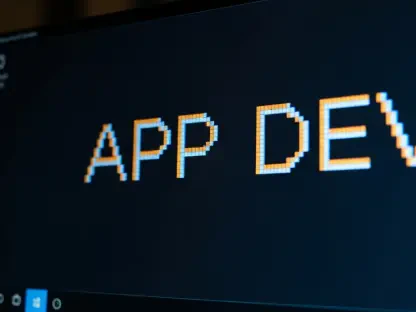In a bustling tech hub, a small startup struggles to keep up with customer inquiries flooding in at all hours, threatening to overwhelm their limited staff, but what if an AI could not only respond to these queries but also anticipate needs, draft personalized solutions, and manage follow-ups with human-like precision? This scenario is no longer a distant dream, thanks to Google Gemini 3 Pro Preview and its seamless integration with open-source tools. This powerful combination is transforming how businesses and developers approach automation, paving the way for AI agents that do more than react—they think, plan, and execute.
Why AI Agents Are Tech’s New Powerhouse
The significance of AI agents lies in their ability to transcend the limitations of traditional automation tools like basic chatbots. Unlike earlier systems that falter with complex tasks, these agents, built on platforms like Gemini 3, can handle intricate workflows with nuanced decision-making. This shift addresses a critical need in industries where efficiency and adaptability are paramount, from customer service to software development. The emergence of such technology marks a turning point, promising to redefine productivity across sectors.
The demand for smarter systems has never been higher, as companies grapple with scaling operations without sacrificing quality. Gemini 3 stands out by offering a framework where AI doesn’t just follow scripts but engages in extended reasoning over multiple interactions. This capability is a game-changer, enabling solutions that mirror human problem-solving, and it’s amplified by open-source collaborations that make these tools accessible to a wide range of users.
Gemini 3’s Cutting-Edge Features Unveiled
At the core of Gemini 3 is the innovative thinking_level parameter, which lets developers fine-tune the depth of reasoning for specific tasks. Need a quick response? Dial it down for speed comparable to Gemini 2.5 Flash, but with sharper accuracy. For complex planning, crank it up to unlock deeper insights. This flexibility ensures that AI agents can adapt to varying demands without compromising on performance.
Another standout is the “Thought Signatures” feature, an encrypted mechanism that retains context across multi-step processes. This prevents the common issue of reasoning drift, where AI loses track of earlier decisions in long interactions. Additionally, the media_resolution setting optimizes token usage for multimodal inputs like images or videos, striking a balance between detail and efficiency that’s crucial for resource-conscious projects.
These advancements position Gemini 3 as a leader in agentic workflows, where AI doesn’t merely assist but actively drives outcomes. Early adopters in tech circles are already noting how these features streamline tasks that once required extensive manual oversight, setting a new benchmark for what AI can achieve in practical settings.
The Open-Source Edge: A Collaborative Force
The integration of Gemini 3 with open-source frameworks is a testament to the power of community-driven innovation. Tools like LangChain enable the creation of stateful, multi-actor agents through graph-based workflows, ideal for orchestrating complex operations. Meanwhile, Vercel’s AI SDK has reported a 17% improvement in reasoning and code generation success rates compared to earlier models, a statistic that highlights tangible progress.
Beyond developer-focused platforms, frameworks like n8n cater to non-technical users, allowing business teams to automate processes without coding expertise. LlamaIndex sharpens the focus on knowledge agents for data-intensive tasks, while Pydantic AI ensures type-safe outputs for production-ready systems in Python. This diversity means that whether someone is a seasoned coder or a business manager, there’s a tool to harness Gemini 3’s potential.
The immediate Day 0 support from these platforms underscores a unified effort to democratize advanced AI. By bridging the gap between cutting-edge technology and practical application, this synergy empowers users across skill levels to build agents tailored to their unique challenges, from marketing automation to intricate debugging.
Expert Voices Echo the Impact
Industry leaders are quick to praise the strides made with Gemini 3. Harrison Chase, a key figure behind LangChain, describes its reasoning and tool use as “a leap in sophistication,” emphasizing how it enables workflows previously out of reach for many AI systems. This sentiment is echoed by the Vercel AI SDK team, whose data-driven insights reveal measurable gains in task success, reinforcing the model’s edge over predecessors.
Beta testers also share compelling stories of transformation. One developer noted how context retention over long sessions revolutionized a customer support agent, reducing resolution times by half. Such real-world feedback paints a vivid picture of how Gemini 3 is not just a theoretical advancement but a practical tool reshaping daily operations for teams worldwide.
These insights, combined with community updates to frameworks like LlamaIndex, build a strong case for Gemini 3’s reliability. The consensus among experts and users alike points to a technology that’s not only innovative but also ready to deliver results in high-stakes environments, from startups to enterprise settings.
Hands-On Guide to Crafting AI Agents
For those eager to dive in, building AI agents with Gemini 3 starts with mastering its core settings. Focus on the thinking_level parameter to adjust reasoning depth based on task complexity, avoiding the pitfalls of over-engineered prompts. Keeping the temperature setting at 1.0 is critical to maintain output consistency, ensuring predictable results across interactions.
Thought Signatures offer a robust way to preserve context in multi-step workflows, preventing errors that disrupt long sessions. Equally important is optimizing multimodal inputs with the media_resolution setting—start at medium fidelity for most tasks to conserve tokens, adjusting only when higher detail is necessary. These tweaks can significantly enhance efficiency without sacrificing quality.
Selecting the right open-source tool is the final piece of the puzzle. Developers might opt for LangChain or Vercel’s AI SDK for complex projects, while business users could turn to n8n for no-code solutions. Consulting the Gemini 3 Developer Guide for API specifics and migration tips ensures alignment with best practices, paving the way for seamless implementation of powerful AI agents.
Reflecting on a Milestone in AI Evolution
Looking back, the rollout of Google Gemini 3 and its synergy with open-source tools marked a defining chapter in AI development. It shifted the paradigm from static automation to dynamic, reasoning-driven agents that tackled real-world challenges with unprecedented finesse. The collaboration between advanced models and accessible frameworks proved that innovation could be inclusive, reaching diverse users with varied needs.
As a next step, exploring how to scale these agents for larger operations emerged as a key focus. Developers and businesses were encouraged to experiment with tailored configurations, leveraging official resources to refine their approaches. Joining community forums to share insights and challenges also became a vital way to push the boundaries of what these technologies could achieve.
Beyond immediate applications, attention turned toward long-term implications—how could such tools evolve to address even broader societal needs? This question lingered as a guiding light, inspiring continuous learning and adaptation in a field that showed no signs of slowing down.









